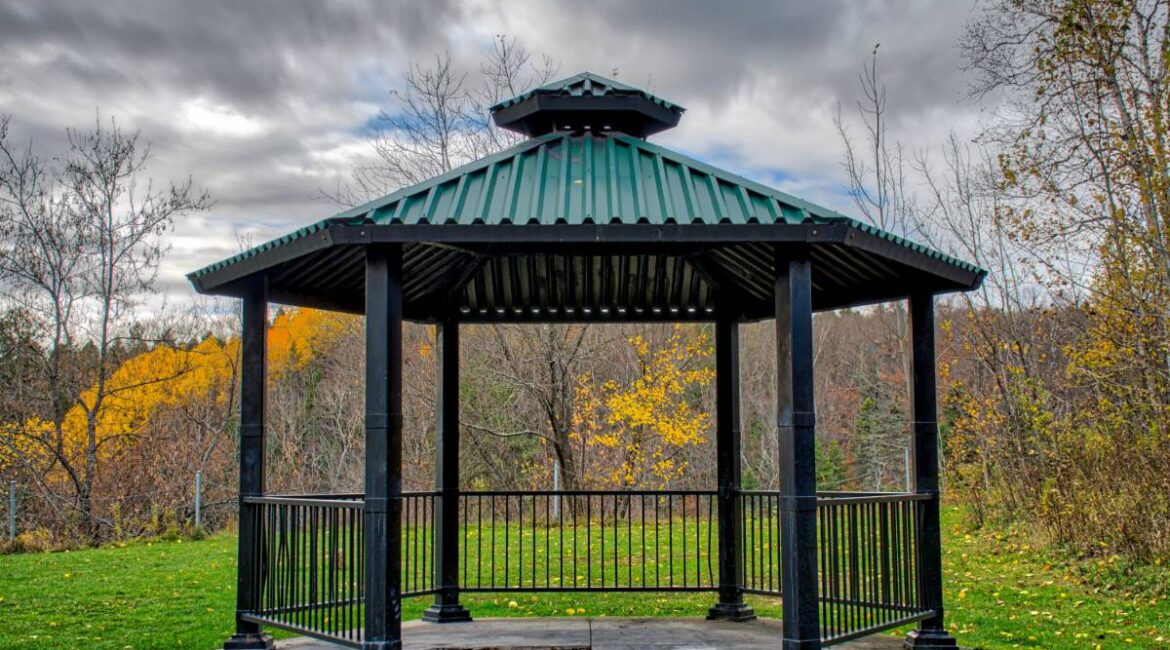Introduction
A gazebo is an open structure people typically use as a living area or to provide shade. It’s larger than a small pergola but smaller than a full-size pavilion or patio cover. Gazebos are available in many different shapes and sizes. But they all offer one thing in common: they’re perfect for enjoying the outdoors without sunburn.
What is a Gazebo?
A gazebo is a versatile outdoor structure, enhancing aesthetics and functionality. It comes in various materials like wood, metal, or vinyl. Each material serves multiple purposes. For example, gazebos offer shaded gathering spots. They are also ornamental additions to gardens. Moreover, they provide shelter from weather elements. Essentially, a gazebo has diverse uses.
Historically, gazebos have a rich background, dating back to ancient civilizations. There, they were meditation and contemplation spots. Now, their distinctive octagon shape is popular. This shape features an arched roof, customizable to your backyard decor. Options include colors like white and brown. Conveniently, gazebos near your home create inviting spaces. They are perfect for occasions like family barbecues. Alternatively, they’re ideal for enjoying a warm summer breeze. Hence, for elegance and versatility in your outdoor area, choose a gazebo. It perfectly blends history with modern functionality.
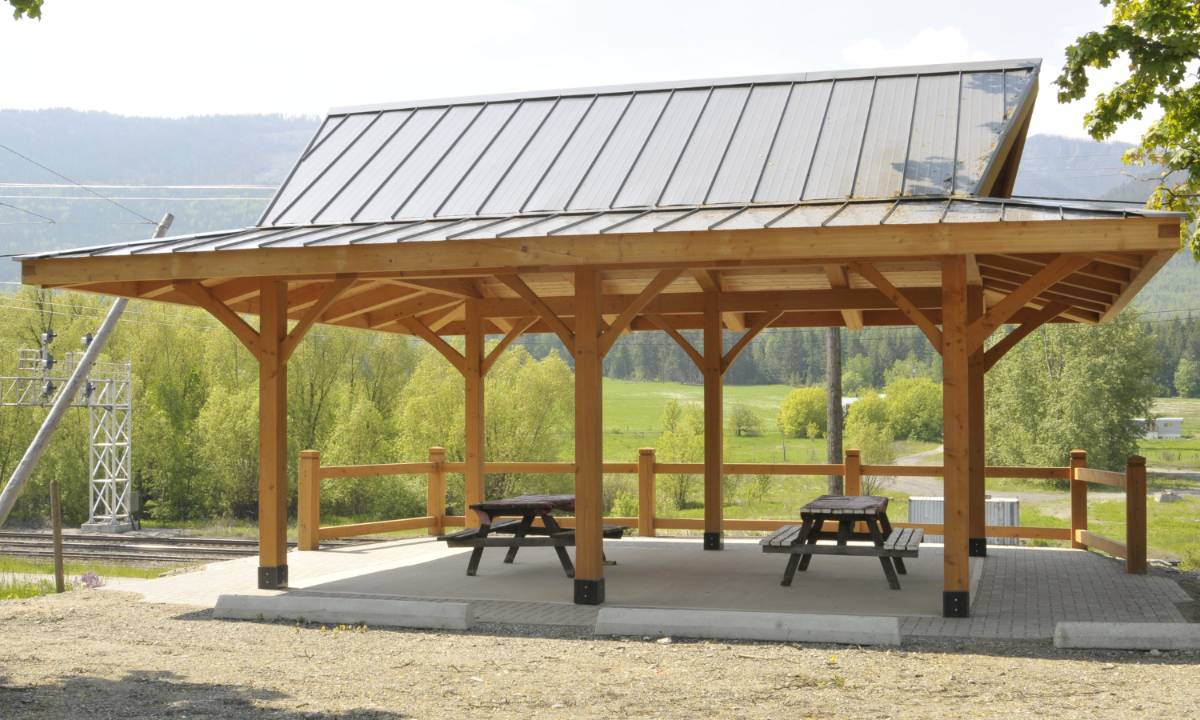
What is a Gazebo Used for?
Gazebos are incredibly versatile outdoor structures. They have a myriad of uses, each one unique. These charming pavilions provide shelter. Additionally, they offer functionality and aesthetic appeal. This variety is perfect for different occasions. Let’s explore how people utilize these delightful structures:
- Outdoor Socializing: Gazebos are ideal for picnics, parties, and family gatherings. They offer protection from the elements. Moreover, they add a charming ambiance.
- Garden Decoration: Gazebos act as captivating focal points in gardens. They elevate the overall aesthetics. Plus, they provide a serene space for relaxation.
- Wedding Ceremonies: Many couples choose gazebos for their special day. They allow for breathtaking backdrops and customizable decor.
- Relaxation and Meditation: These structures offer a tranquil retreat. They shield you from distractions. Consequently, they are ideal for relaxation and meditation.
- Hot Tub or Spa Enclosure: Transform a gazebo into a private spa enclosure. This creates a cozy, sheltered space for hydrotherapy and relaxation.
- Dining Area: Gazebos with dining furniture offer a unique dining experience. Enjoy alfresco meals amidst the beauty of the outdoors.
- Protection from Insects: Gazebos with screens provide comfort. They keep pesky insects at bay, ensuring a comfortable outdoor experience.
- Weather-Resistant Retreat: Enjoy the outdoors in gazebos. They are perfect for reading, napping, or unwinding. Stay shaded and protected from the sun’s rays.
- Year-Round Use: Gazebos offer versatility in all seasons. They provide cool breezes in summer and shelter during colder months.
- Versatile and Cozy: The gazebo’s allure lies in its small size and countless uses. From outdoor dining to peaceful sleep, it’s a cherished addition to any outdoor space.
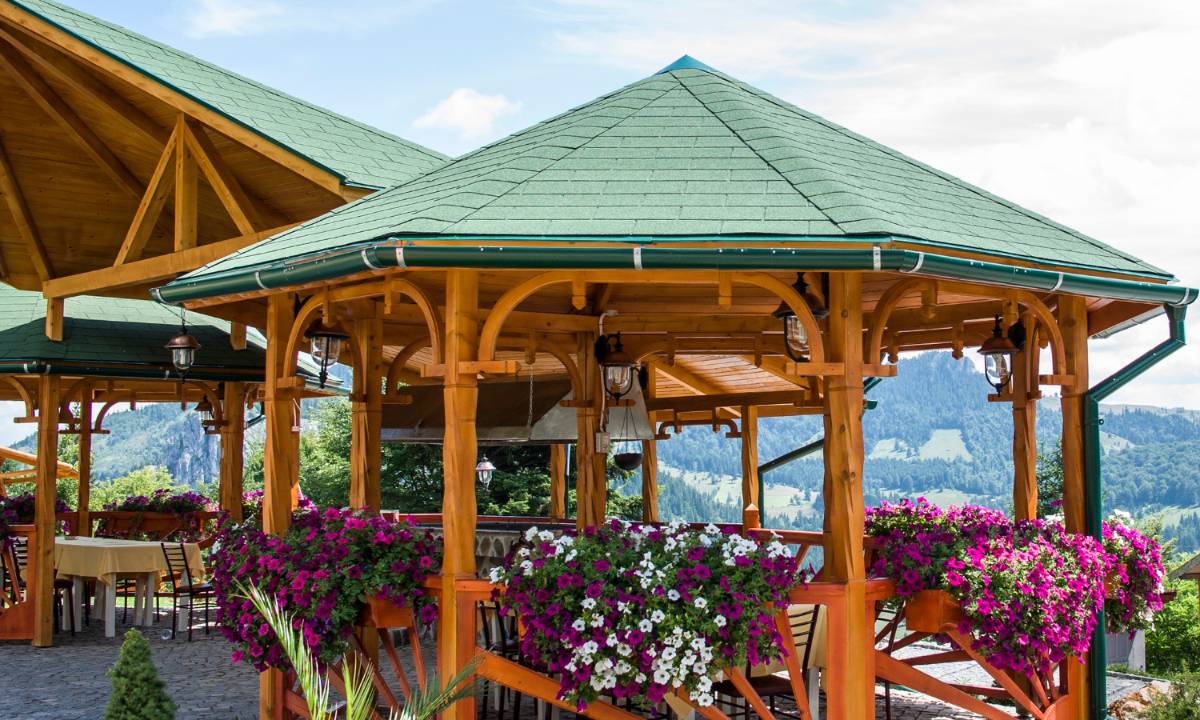
A Gazebo as an Excellent Addition to Outdoor Living Space
A gazebo can be an excellent addition to your outdoor living space. A gazebo is a pavilion or structure with a roof, supported by columns or posts and often built over a garden or terrace. The system has evolved, but its basic features remained the same.
Gazebos are wonderful addition to your outdoor living space. Here’s why:
- Firstly, gazebos provide versatile outdoor space. They offer a flexible area that can be tailored. This tailoring can be for relaxation or outdoor dining.
- Secondly, they offer shaded relaxation. Enjoy the outdoors while being shielded from the sun’s rays.
- Thirdly, they boost property value. Adding a gazebo can make your property more appealing. This appeal is specifically to potential buyers.
- Fourthly, gazebos serve as an outdoor entertainment hub. They are perfect for hosting gatherings. These gatherings can be in a comfortable, sheltered setting.
- Lastly, gazebos add aesthetic charm. They come in various designs. These designs enhance the beauty of your outdoor space.

Related: The Ultimate Guide To Pergola And How To Install It
Gazebos Can be Octagon-shaped, Round, Square, or Hexagon
Gazebos come in various shapes, offering diverse design choices. They also provide functional versatility. The shape of a gazebo reflects individual preferences and architectural needs. Here are some common shapes:
- Octagon Gazebos: This timeless classic features an eight-sided structure. It is a favorite for outdoor spaces.
- Round Gazebos: This shape embraces a circular design. It creates an open, welcoming ambiance.
- Square Gazebos: This shape exudes a contemporary flair. It features geometric lines, ideal for modern outdoor settings.
- Hexagon Gazebos: This shape strikes a balance. It combines the classic octagon’s appeal with unique aesthetics, thanks to its six sides.
Beyond these, some choose shapes like rectangles or ovals. These cater to specific architectural visions. Your choice of shape influences the gazebo’s aesthetics. It also affects how it harmonizes with its surroundings. Octagonal gazebos offer more square footage. Meanwhile, hexagonal ones balance space and style.
However, the round shape is unique. It presents challenges in support and maintenance due to its design. This shape lacks easy external access. So, your choice matters. Whether you opt for tradition, modernity, or uniqueness, the shape of your gazebo is crucial. It becomes an essential element in your outdoor space’s design.
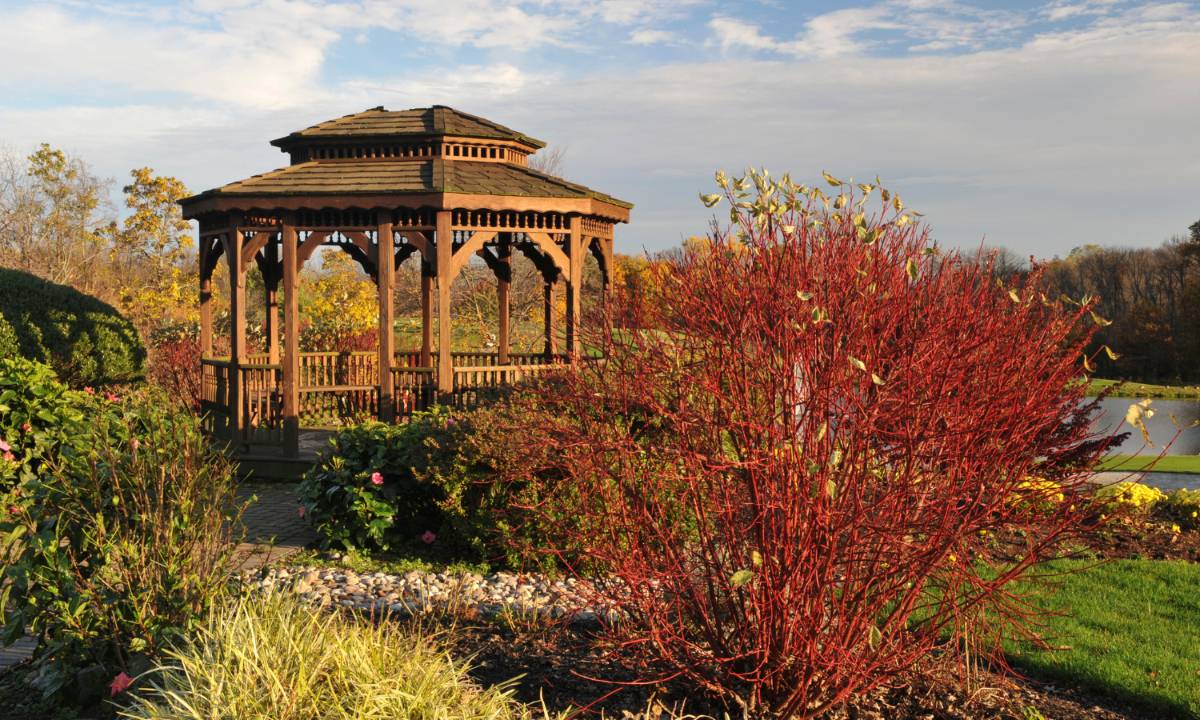
Pick The Right Gazebo For Your Needs
When selecting the ideal gazebo, there are crucial steps involved. These steps ensure you make a choice that perfectly suits your outdoor needs:
- First, ponder the purpose of your gazebo. It could be for entertaining, relaxation, or as a focal point in your backyard. This determination will significantly affect your choices. It influences the size and style you opt for.
- Next, assess the available space. Measure it to choose a gazebo size that fits comfortably. Size matters, whether it’s a small 8′ x 8′ for cozy corners. Or, it could be a spacious 12′ x 12′ for larger areas.
- Then, consider the material of your gazebo. Take into account the climate and your personal preference. Choices include wood, metal, and fabric canopies. Each has unique advantages and maintenance requirements.
- Budget is essential too. Decide on a comfortable financial plan. Then, find options that align with it.
- Placement is another key factor. Ensure a level foundation in your chosen location. Also, decide between a permanent or portable structure.
- Make a style statement. Select a gazebo design that complements your outdoor space and personal taste. Options range from traditional to modern.
- Additionally, consider any accessories or features. These might include curtains, mosquito nets, or lighting to enhance functionality.
- Don’t forget the maintenance requirements of your chosen material. By following these steps, you’ll find the perfect gazebo. It will not only fit your space but also enhance your outdoor living experience.
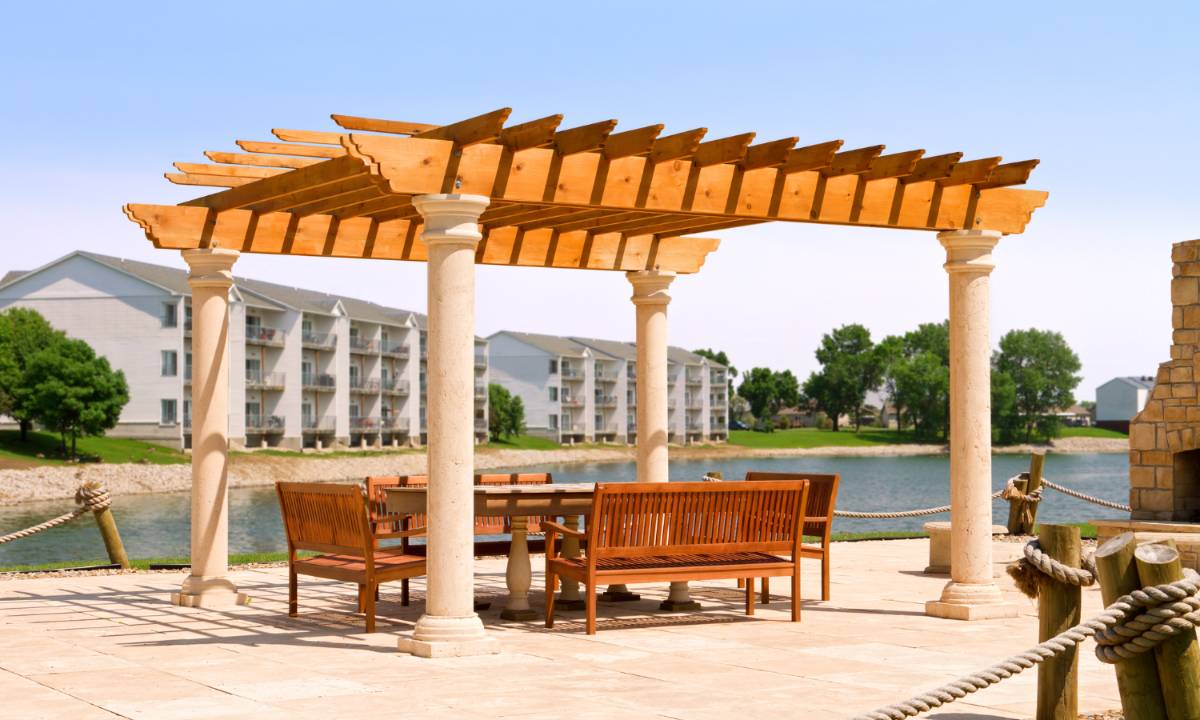
Pitched Roof vs. Flat Roof Gazebos
When choosing gazebos, the roof type is key. Let’s compare pitched and flat roofs:
Design and Aesthetics:
- Pitched roofs have a timeless charm. They add height and architectural beauty.
- Flat roofs, however, are modern and minimalistic. They offer a clean, contemporary look.
Space and Ventilation:
- Flat roofs provide more headspace and better ventilation. This creates an airy, open environment.
- Pitched roofs, though cozy, have less airflow. They’re great for shade and rain protection.
Water Drainage:
- Pitched roofs are great for drainage, especially in rainy areas.
- Flat roofs might gather water. They often need extra care to prevent pooling.
Maintenance and Longevity:
- Flat roofs are easier to maintain and usually last longer.
- Pitched roofs need more upkeep due to their complex design. However, they are durable.
Cost:
- Flat roofs are more affordable. This is due to their simpler construction.
Ultimately, your choice should reflect your style, local weather, and budget. Think about what you like visually. Consider the weather in your region. Decide how much maintenance you’re ready for. Whether it’s the classic look of a pitched roof or the modern vibe of a flat roof, your gazebo will be a perfect outdoor sanctuary.
Gazebos’ Materials
When building gazebos, you have several material options. Each one offers unique advantages, meeting different tastes and requirements:
- Wood: This classic choice is known for its natural beauty. It’s versatile, with options like cedar and redwood for lasting use.
- Metal: If you prefer sleek and easy to care for, consider aluminum and steel. These metals resist rust and look modern.
- Vinyl: Choose vinyl for a strong, low-maintenance option. It stands up to rot, insects, and moisture.
- Fabric: Some gazebos feature fabric canopies. They’re easy to put up and take down, ideal for temporary shade.
- Composite Materials: These combine wood fibers and plastics. They look like wood but are more durable.
Wood gazebos are sturdy but need yearly staining or painting. This keeps them looking good. Metal gazebos, especially rust-resistant ones, can last about ten years. Vinyl gazebos are light yet strong. They are safe even in strong winds. These materials offer different styles and maintenance levels. So, you can find the perfect match for your gazebo. Whether you value style, longevity, or ease of care, there’s a choice for you.
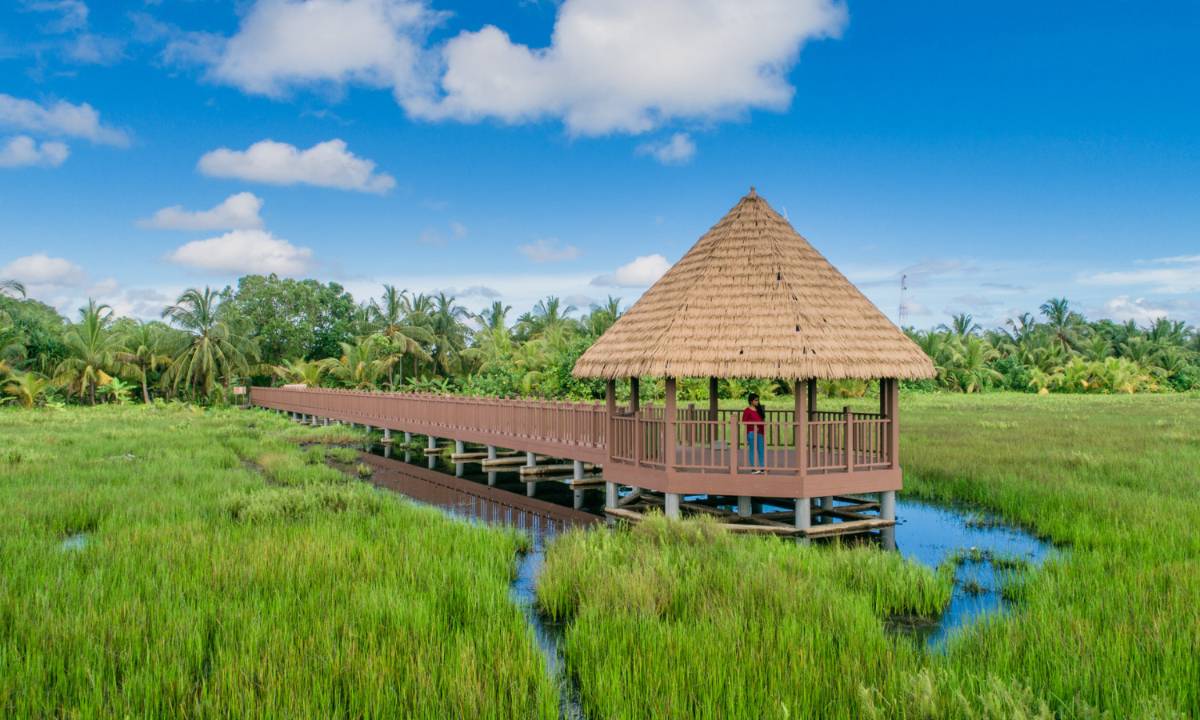
Vinyl Gazebos Are Extremely Popular, But With Several Limitations
Vinyl gazebos are undeniably popular, but there are some important considerations to keep in mind. Let’s explore these points:
- Aesthetic Appeal: Vinyl gazebos have a sleek, modern look. They maintain their freshness for a long time.
- Longevity: These gazebos are low-maintenance and resist decay. They are known for their prolonged lifespan.
- Limited Customization: They come in various styles and colors. Yet, they can’t be customized as much as wood gazebos.
- Cost Factor: Vinyl gazebos might cost more than wooden ones.
- Environmental Concerns: Unlike eco-friendly wood gazebos, vinyl is synthetic.
- Versatility of Vinyl: It’s flexible, allowing easy cutting and molding. This doesn’t damage its structure.
- Price Considerations: However, this very flexibility might increase the cost.
- Fire Hazard: A downside is that vinyl isn’t fire-resistant. This can pose safety concerns.
- Sunlight Effects: Over time, UV rays can cause vinyl to crack and warp.
- Decision Factors: When choosing, consider your preferences, budget, and environmental values.
Each of these points plays a role in deciding if a vinyl gazebo is right for you. Keep them in mind as you weigh your options.
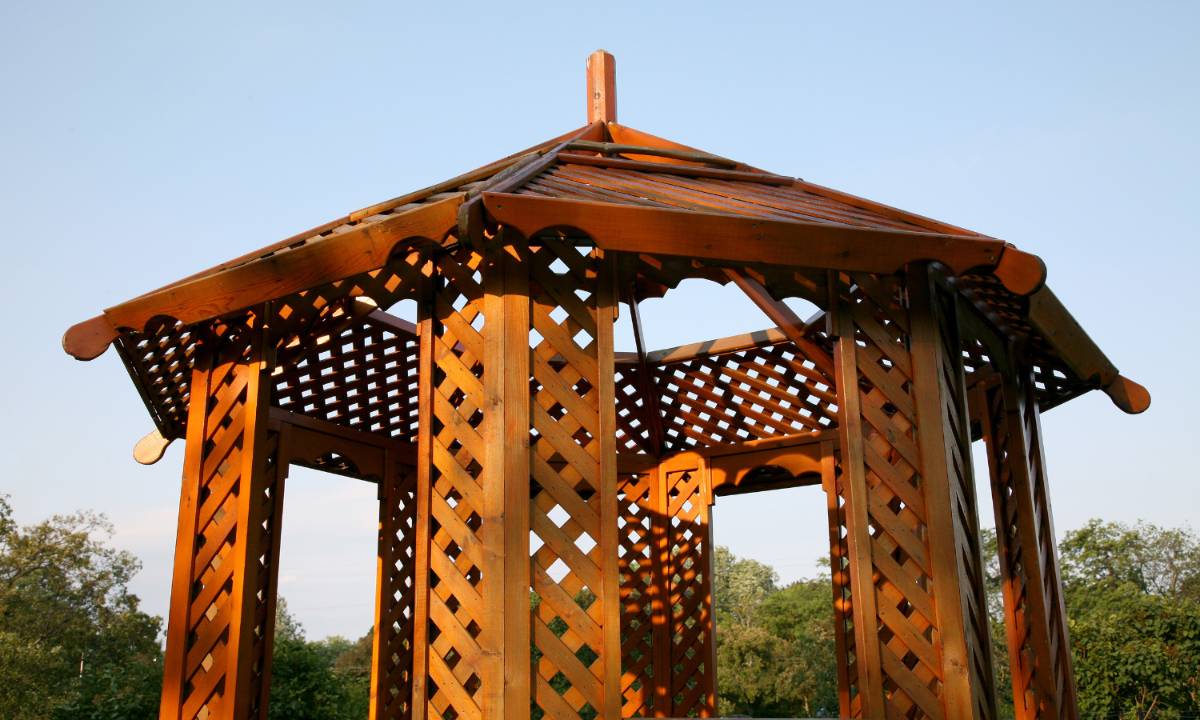
Gazebos Come With Extras, Like Curtains and Screens
Gazebos are more than just shelters – they’re packed with enticing extras. Let’s explore these delightful additions:
- Privacy and Shade: Curtains transform gazebos into private havens. They provide a shield from the sun. This makes them perfect for relaxing or changing clothes in privacy.
- Weather Protection: The curtains are thick and durable. They protect against harsh weather. So, you can enjoy your gazebo come rain or shine.
- Aesthetic Appeal: Enhance your outdoor style effortlessly. Use curtains and screens that match your decor. They add a touch of elegance to your space.
- Insect Control: Screens are great for keeping bugs away. They ensure your summer evenings are bug-free.
- Customization: You can find curtains and screens made just for your gazebo. They fit perfectly and enhance the gazebo’s functionality.
These additions make your gazebo versatile. They turn it into a comfortable and beautiful retreat in your garden. When picking curtains, think about the material. Luxurious fabrics like velvet or silk offer privacy. For elegance, consider breathable materials like lace or sheer fabric.
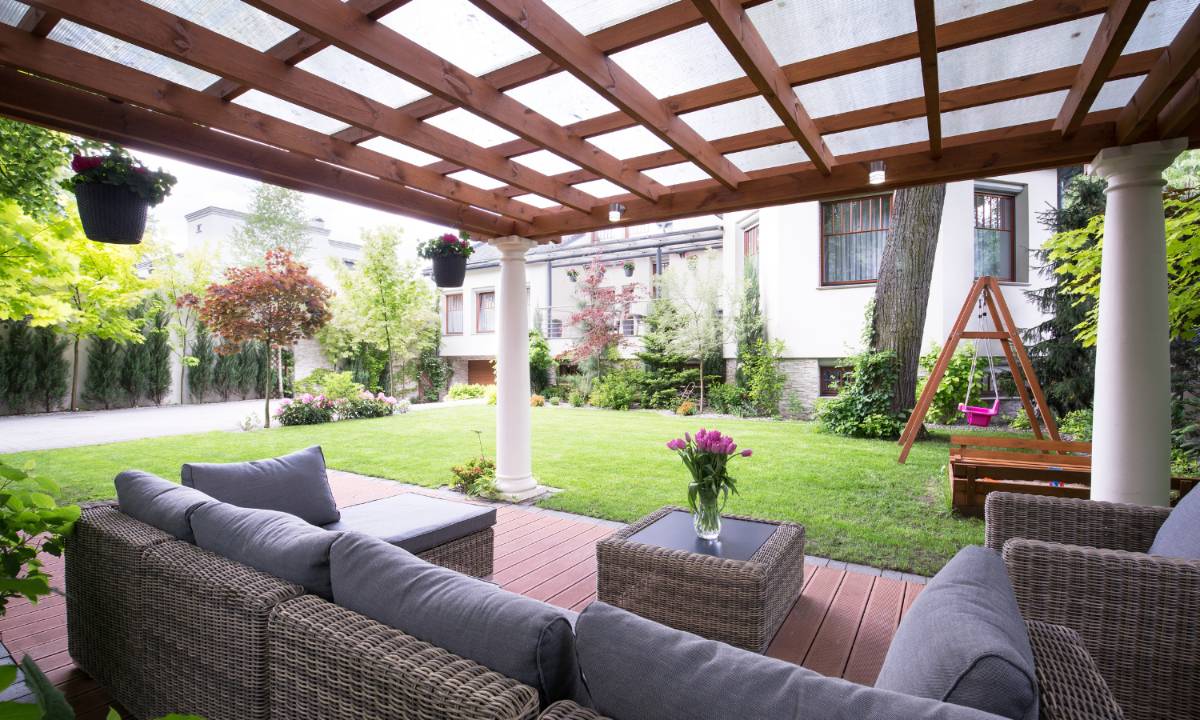
The Gazebo Posts As One of The Most Crucial Design Elements
When designing your gazebo, pay close attention to its supporting posts. These posts can be made from wood, metal, or vinyl. They are vital for your gazebo’s look and stability. To ensure a solid structure, space the posts at least 8 feet apart. It’s crucial for the posts to be properly spaced. Additionally, they must be sturdy and securely anchored to the ground. This precaution prevents mishaps if someone leans against them. Furthermore, consider the aesthetics of your gazebo. Think about painting or staining the posts. This should match the gazebo’s overall design. By doing this, you integrate the posts into the gazebo’s look. They become both functional and visually appealing. So, in gazebo design, don’t underestimate the posts’ significance. They are not just for support. They are an essential part of the gazebo’s style and safety.
Related: 33 Creative Backyard And Outdoor Gazebo Ideas
A Well-chosen, Well-pavilion Gazebo Can Enhance The Outdoor Living Space
A well-chosen gazebo adds elegance and functionality to your outdoor sanctuary. These structures are versatile, bringing numerous benefits:
- Shade and Privacy: Gazebos offer a serene escape from harsh elements. They provide a cool respite from the sun and shelter from rain. Ideal for relaxed outdoor moments, they’re perfect for gatherings too.
- Versatility: Gazebos adapt to your needs. They can become a cozy reading nook or an outdoor yoga studio. Alternatively, they transform into a tranquil exercise space. Customize your outdoor area as you wish.
- Weather Resistance: Gazebos have solid construction. They withstand all weather: rain, snow, cold, or intense sun. Your outdoor escape remains inviting throughout the year.
- Low Maintenance: Gazebos are easy to care for. They require less upkeep than pools or elaborate landscaping. Thus, you enjoy your outdoor oasis with minimal effort.
In summary, a thoughtfully designed gazebo is more than a visual treat. It’s a practical addition, offering shade, versatility, and durability. These freestanding structures, with their charming roofed beauty, enhance ambiance. They create splendid settings for gatherings. Whether it’s the soft glow of lights or colorful blooms, they add a personal touch to your haven.
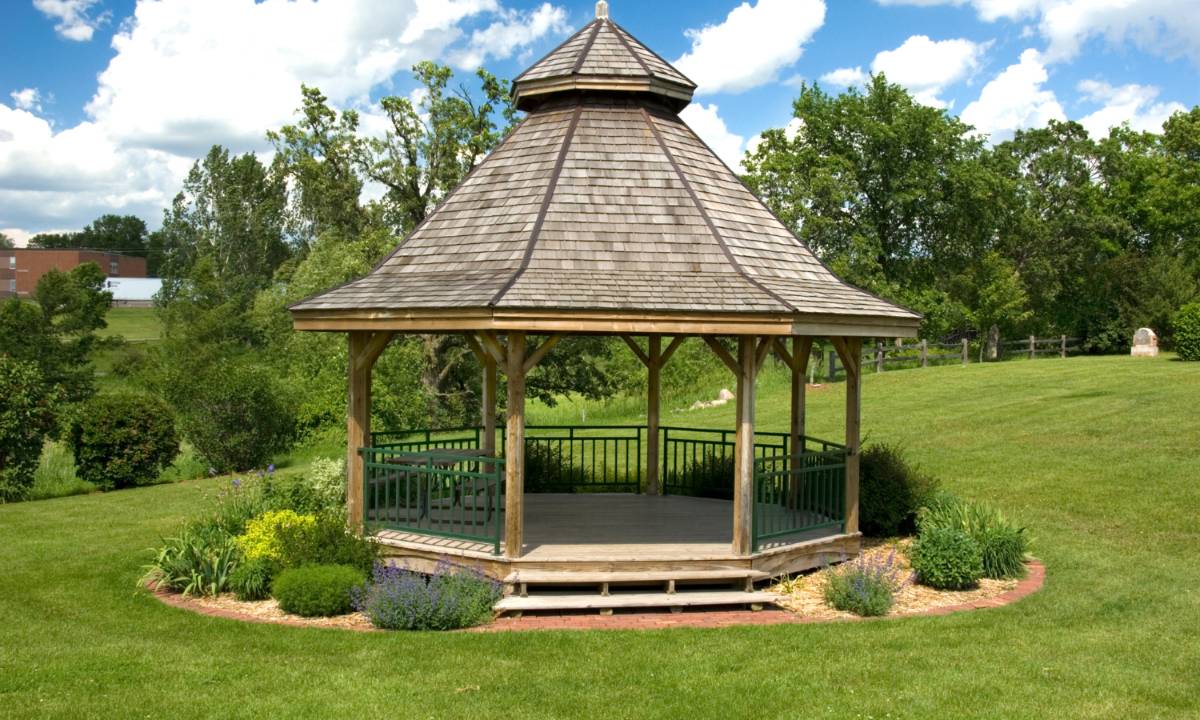
Conclusion
The gazebo is one of the most versatile structures in the world. It can serve as a place to relax, entertain and socialize. But it can also provide shelter from sun and rain. No matter what use you have for your gazebo—or whether it’s just for aesthetics—it’s an investment worth making. With careful planning and forethought, you’ll be able to find exactly what you need for your outdoor living space.

